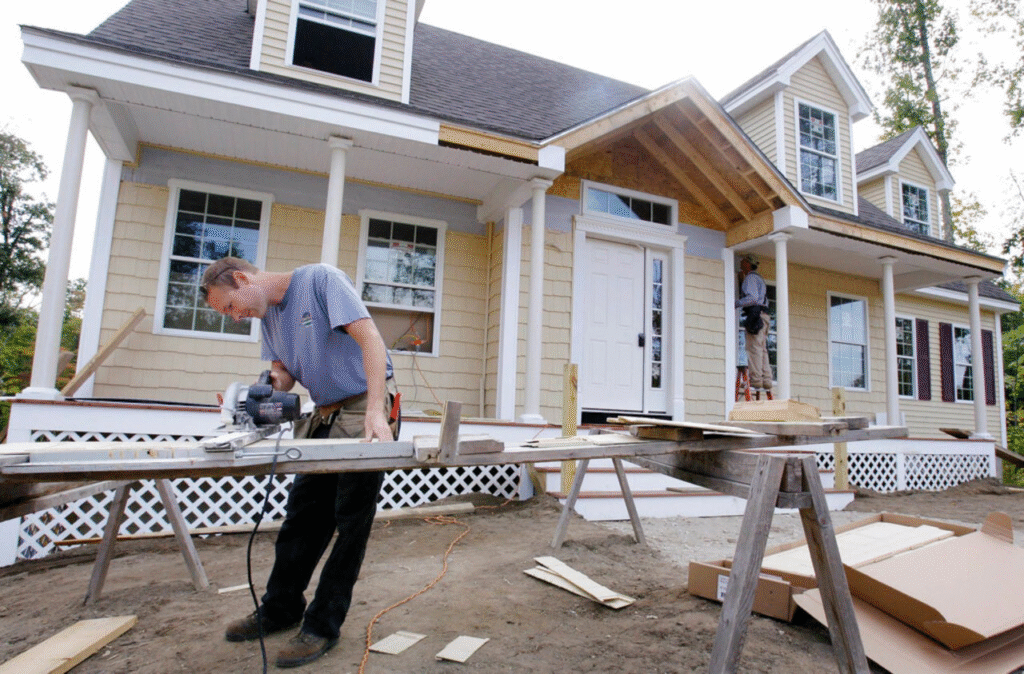Home renovations can be both exciting and overwhelming, as they promise to transform living spaces but also introduce a range of challenges. Many homeowners expect disruptions, yet the real delays often come from overlooked details that surface mid-project. Whether it’s a lack of planning, unforeseen material shortages, or scheduling conflicts, even the best-prepared projects can encounter setbacks. Understanding the less obvious factors that influence timelines helps in developing a realistic approach from the beginning. By anticipating possible obstacles and building flexibility into the plan, homeowners can significantly reduce stress and avoid unnecessary costs. Here are nine hidden reasons your renovation may take longer than expected.
Not Having a Clear Renovation Plan
One of the most common causes of renovation delays is starting without a well-defined plan. Unclear priorities often lead to design changes mid-project, which can halt progress and increase costs. From architectural drawings to material specifications, every decision should be documented and agreed upon before work begins. Professional input early on can help avoid oversights that later cause disruption. Many homeowners benefit from guidance offered by trusted design experts, ensuring that the project remains organized and aligned with both goals and budget expectations. A structured roadmap is the foundation for a renovation that finishes smoothly and on schedule.
DIY Projects That Should Be Handled by Pros
While do-it-yourself tasks may seem cost-effective, attempting specialized work without professional knowledge can create long-term delays. Electrical wiring, plumbing modifications, and structural changes demand skills and certifications that most homeowners lack. Mistakes not only slow down progress but may also require costly corrections later. By consulting resources such as Remodeling, it becomes clear which aspects of a project are best left to licensed experts. Choosing professional help early ensures safety, efficiency, and adherence to building codes. Homeowners who focus their energy on manageable DIY tasks while leaving complex jobs to skilled contractors experience fewer interruptions overall.

Overspending Early in the Project
Renovations often stall when too much of the budget is used in the initial stages. Premium finishes and impulse purchases at the beginning can limit resources for essential tasks later on. Without adequate financial planning, homeowners may face unexpected pauses while waiting for additional funds or making compromises in quality. Careful pacing of expenditures allows for flexibility when surprises occur. Allocating resources gradually and reserving a portion of the budget for contingencies helps maintain momentum throughout the renovation process. Strategic financial discipline early on prevents frustrating delays and ensures a balanced approach to design and functionality.
Delays in Material Deliveries
Material availability is another hidden factor that can significantly influence timelines. Special-order items such as custom cabinetry, imported fixtures, or unique flooring often require longer lead times. If these materials are not ordered early, construction teams may be forced to wait before proceeding. Supply chain disruptions can further compound the issue, adding weeks of delay to the project. To minimize risk, homeowners should prioritize ordering critical items well in advance. Contractors who plan around delivery schedules and communicate closely with suppliers help reduce waiting periods. Proper coordination between purchasing and construction phases ensures smoother progress.
Contractor Availability and Scheduling Conflicts
Contractor availability plays a crucial role in project timelines. Skilled professionals often book their schedules months ahead, which means delays can occur if their availability doesn’t align with the homeowner’s timeline. Additionally, overlapping projects or unexpected absences may lead to further complications. Establishing clear communication with contractors before the start date and confirming timelines in writing can prevent conflicts. Some homeowners also benefit from working with project managers who coordinate multiple trades efficiently. Early scheduling, paired with flexibility in start dates, is key to avoiding prolonged downtime during critical phases of the renovation.

Permit Issues and Local Regulations
Regulatory compliance is a factor that homeowners often underestimate. Renovations requiring permits may face delays if applications are incomplete or inspections fail to meet local standards. Each municipality has its own rules and approval processes, which can extend timelines if not properly managed. Failure to secure the right permits before starting can lead to work stoppages and even penalties. To avoid unnecessary delays, it is vital to research local building requirements and prepare documentation in advance. Collaborating with contractors familiar with regional regulations ensures smoother approval processes and minimizes setbacks caused by administrative hurdles.
Expanding the Project Mid-Way
Scope creep, or adding new elements during a renovation, is a hidden factor that significantly impacts schedules. Homeowners often decide mid-project to expand the design, whether by adding a new room, upgrading finishes, or including additional features. While these enhancements may improve the final result, they usually extend completion timelines. Adjusting budgets, reordering materials, and rescheduling contractors all contribute to delays. To reduce disruptions, it’s best to finalize plans early and resist major changes once work has begun. A disciplined approach to decision-making helps ensure the renovation stays on track without unnecessary interruptions.
Weather Conditions (Yes, Even in San Diego)
Although San Diego is known for its mild climate, weather can still influence renovation schedules. Heavy rains, heatwaves, or unexpected humidity may delay outdoor projects like roofing, landscaping, or exterior painting. Even small weather disruptions can push back contractor availability and delivery schedules. Preparing for seasonal variations and having contingency plans ensures that minor weather setbacks do not cascade into major delays. Homeowners who account for these potential disruptions from the outset can better manage expectations. Factoring in weather-related risks is especially important for projects involving exterior structures or site preparation.

Booking Trades in the Wrong Order
The order in which trades are booked is essential to project flow. For example, electrical and plumbing work must often be completed before walls are closed, while flooring installations should follow after painting. Mistiming the sequence of trades leads to rework, inefficiencies, and extended timelines. Coordinating schedules carefully and ensuring that each professional arrives at the right stage prevents overlap and wasted effort. Experienced contractors or project managers usually excel at sequencing tasks correctly. Proper coordination of trades reduces downtime, increases efficiency, and ensures that every stage builds seamlessly on the previous one.
How Navilize Streamlines Project Management in San Diego Renovations
Renovations in San Diego often face unique challenges, from regional regulations to contractor demand. Navilize addresses these issues through a structured project management process that prioritizes planning and communication. By coordinating contractors, monitoring material delivery schedules, and ensuring compliance with local codes, Navilize minimizes delays that homeowners commonly encounter. The team’s expertise allows projects to progress smoothly, even when unexpected factors arise. With strong relationships across the local construction network, they are able to resolve conflicts quickly and keep renovations on track. Homeowners who choose Navilize benefit from a reliable, organized approach that turns renovation goals into reality.






